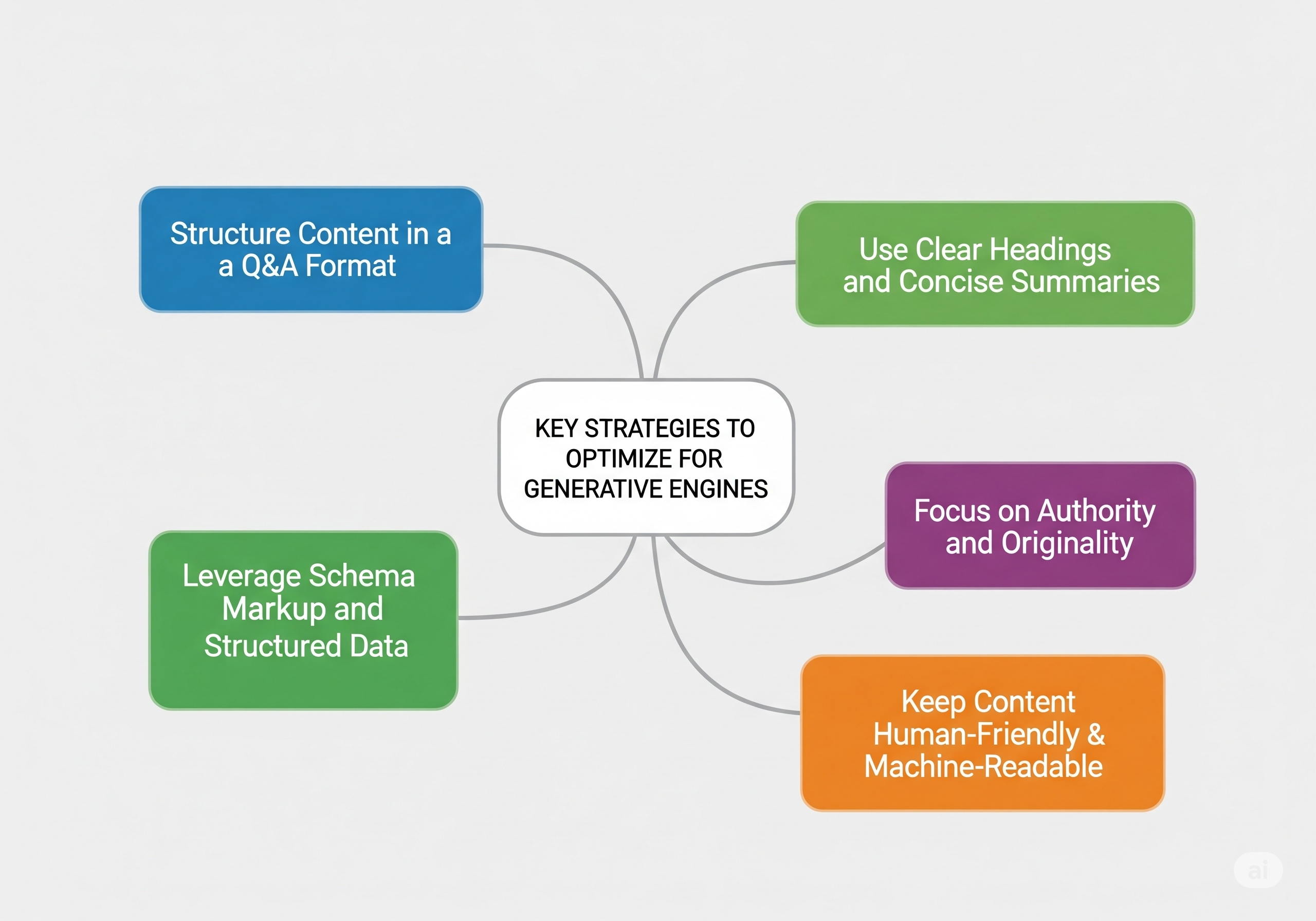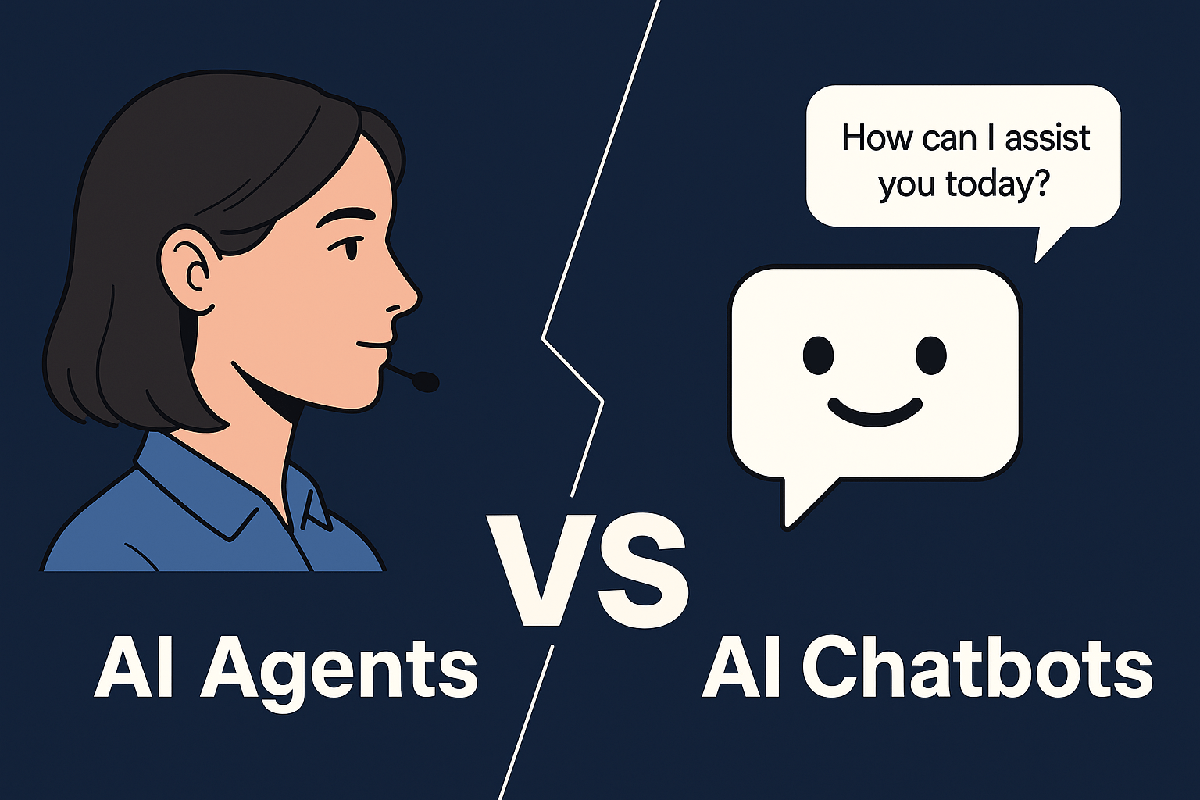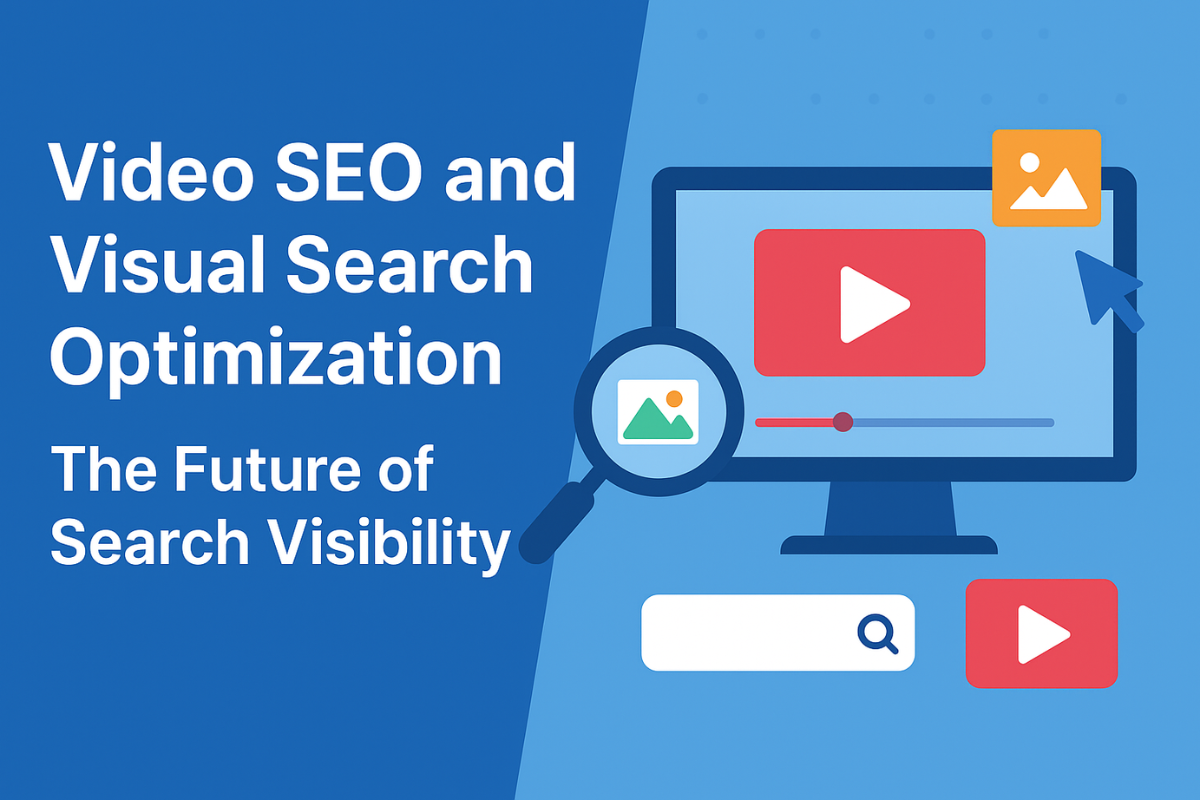The rise of AI-powered search tools, such as ChatGPT, Google’s Search Generative Experience (SGE), and Perplexity AI, has reshaped how users discover and interact with information online. Traditional SEO strategies that focus solely on keywords and backlinks are no longer enough—businesses and content creators must now adapt to a new approach known as Generative Engine Optimization (GEO). This innovative discipline centers on optimizing content for AI-driven engines that generate responses rather than simply ranking links.
In this blog, we’ll break down what GEO means, why it matters, and the actionable strategies you can use to ensure your content remains visible in the age of generative AI. From understanding how generative engines work to crafting structured, AI-friendly content, this guide will help you future-proof your SEO strategy and maintain an edge in a rapidly evolving digital landscape.
What is Generative Engine Optimization (GEO)?
Generative Engine Optimization is the next evolution of SEO, designed specifically for AI-driven search engines like ChatGPT, Google Gemini, and Perplexity. Instead of optimizing content only for Google’s traditional search results, GEO focuses on making your content easy for generative AI systems to understand, extract, and present directly to users. This means structuring your content so that it’s not just readable for people, but also easily retrievable for AI models that generate conversational answers.
The big shift here is that GEO isn’t about ranking on page one—it’s about being cited and referenced by AI when it generates responses. If traditional SEO is about winning clicks from Google’s blue links, Generative Engine Optimization is about earning visibility in the new world of AI answers. Businesses that adapt early will position themselves as trusted sources in these next-generation search experiences.
Why GEO Matters in 2025 and Beyond
The way people search online is changing rapidly. More users are turning to AI tools to ask questions, get summarized insights, and receive direct answers without ever clicking through to a website. This “zero-click” search behavior means traditional SEO strategies alone are no longer enough (read more about zero-click behavior here). Generative Engine Optimization ensures that your content is still visible and influential in an era where AI is the first touchpoint for information.
Ignoring GEO could mean becoming invisible to a massive audience that relies on AI for decision-making. On the other hand, brands that embrace it can gain early-mover advantage. By aligning your content with how generative engines process and deliver information, you increase the chances of being showcased in responses—ultimately driving brand awareness and authority even if fewer users are clicking traditional links.
How GEO Differs from Traditional SEO
Traditional SEO focuses heavily on ranking signals like backlinks, keyword density, and page speed. While these factors remain important, Generative Engine Optimization emphasizes clarity, structure, and authority. AI models don’t just scrape titles or meta descriptions—they parse entire content pieces to find the most reliable and concise information. That means your blog posts, FAQs, and guides should be written in a way that makes it easy for AI to extract key points.
Another major difference is intent. With SEO, the goal is often to attract clicks from search results. With GEO, the priority shifts to being the source of truth for AI-generated answers. This means adopting a conversational style, formatting content with headings and lists, and providing concise, authoritative explanations. While SEO is about visibility on Google’s SERPs, GEO is about visibility in AI-driven conversations.
Key Strategies to Optimize for Generative Engines

Generative Engine Optimization (GEO) is about making your content clear, structured, and trustworthy so AI platforms like ChatGPT, Perplexity, and Google Gemini can easily extract and present it. Here are the most effective strategies, explained in depth:
Structure Content in a Q&A Format
Generative engines are built around natural language queries, so content that mimics that style has a higher chance of being featured in answers. By structuring your blog posts with FAQs or phrasing subheadings as questions, you’re essentially “teaching” AI how to find and present your content.
For example, instead of using a heading like “Generative Engine Optimization Benefits,” you could phrase it as “What are the benefits of Generative Engine Optimization?” and then provide a short, concise answer followed by a more detailed explanation. This mirrors how AI models deliver responses to users—quick, clear, and expandable. It’s not just about format, though: tone matters too. Writing in a conversational yet authoritative way helps AI select your content because it aligns with how answers are generated in real-time.
Use Clear Headings and Concise Summaries
Headings are no longer just for user readability—they’re signals for machines. Breaking your content into well-defined sections using H2s and H3s makes it easier for generative engines to map out the flow of your article. At the start of each section, include a brief summary sentence that captures the essence of that section in plain language.
For instance, if your section is about strategies, begin with “The most effective GEO strategies are those that combine structure with authority.” These summaries help AI engines quickly extract key information without scanning entire paragraphs. Lists, bullet points, and numbered steps also increase readability, ensuring that your content can be quoted directly in AI-generated answers. Think of your summaries as “mini-featured snippets” that stand on their own, while still being part of a larger narrative.
Leverage Schema Markup and Structured Data
Schema markup is like a translator between your website and search engines, and it plays an equally important role in Generative Engine Optimization. By adding structured data—such as FAQ schema, HowTo schema, or Article schema—you help AI understand not only the words on the page but also the context behind them. For example, FAQ schema makes it crystal clear that your content is designed to answer common questions, while Article schema emphasizes author credibility and publication details. This metadata helps generative engines filter reliable content from generic sources, giving your content a better chance of being included in AI-driven answers.
Structured data also supports transparency by showcasing important details like authorship, date of publication, and source credibility—all of which align with Structure Content in a Q&A Format
Focus on Authority and Originality
With generative engines pulling from vast pools of data, only content that offers something truly valuable will stand out. AI systems tend to deprioritize repetitive or shallow material in favor of original, well-sourced, and authoritative writing. To build this authority, invest in creating unique assets like original research, case studies, surveys, or expert commentary.
For example, if you’re writing about Generative Engine Optimization, you could conduct a small experiment testing how different content formats get picked up by AI, and then share your findings. This type of originality positions your content as a primary source, which AI engines prefer. Additionally, featuring author bios that highlight credentials (such as professional background, years of experience, or industry recognition) builds credibility not only with human readers but also with AI engines scanning for expertise. In short, originality paired with authority makes your content the go-to reference in AI-driven answers.
Keep Content Human-Friendly and Machine-Readable
While it’s tempting to focus purely on technical optimization, the truth is that generative engines are designed to model human communication. That means your content should always prioritize clarity and readability. Use short sentences, active voice, and straightforward explanations so your writing is easy to follow. Avoid keyword stuffing or jargon-heavy paragraphs that make your content harder to process. Instead, focus on contextual relevance—using natural phrasing that aligns with how people actually ask questions.
For instance, instead of repeating “Generative Engine Optimization” in every sentence, you can use variations like “GEO” or “AI-driven optimization strategies” to maintain flow while keeping relevance. Formatting also matters: break up long blocks of text with lists, subheadings, and bold highlights. This balance ensures your content is enjoyable for humans while also easy for machines to interpret, extract, and present accurately.
The Future of GEO: Trends and Predictions
Generative Engine Optimization is still in its early stages, but its importance will only grow as AI platforms continue to dominate how people search and consume information. In the near future, we may see specific guidelines from major AI engines about how to format and submit content—much like Google’s search guidelines in traditional SEO. Businesses that stay ahead of this curve will reap long-term benefits.
Looking further ahead, GEO could become as critical as traditional SEO once was in the early 2000s. Companies that adapt now will establish themselves as leaders, while late adopters may struggle to catch up. The future of Generative Engine Optimization lies in creating transparent, valuable, and structured content that both humans and AI can trust—and the brands that embrace this mindset will thrive in the AI-first digital landscape.
Conclusion
Generative Engine Optimization (GEO) is not just a passing trend—it’s the next frontier of digital visibility. As AI-driven platforms continue to transform search behavior, businesses that adapt early will gain a significant advantage over competitors who rely only on traditional SEO. The key lies in creating authoritative, well-structured, and context-rich content that aligns with the way generative engines process and deliver information.
By adopting GEO strategies such as emphasizing structured data, focusing on topical authority, leveraging conversational search optimization, and prioritizing brand trust, you position your content to thrive in an AI-powered search world. The future of search isn’t about beating the algorithm—it’s about collaborating with it. Embrace GEO now, and your content will be ready for the next evolution of online discovery.













